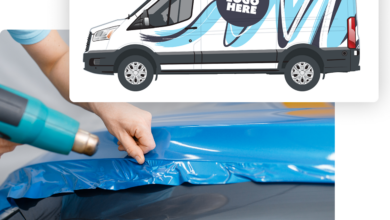Window perf material doesn’t have a lifetime warranty. Therefore, shops must know how much of the material they think they will use and how to store it to keep it in top condition.
Josh Culverhouse, ORAFOL Americas Inc., says materials must be stored in environments that are around 50% relative humidity and between 65-75 F to keep the material consistent.
The same could be said for all vinyl materials. People who store their window perf in a warehouse with constantly fluctuating humidity and temperature will have a harder time maintaining their product. If the distributor doesn’t have humidity and temperature controls in its storage facility, Culverhouse recommends they bring the material inside their production environment 24 hours ahead of time so it can adapt more quickly to the temperature there.
Patrick Henrietta, Contra Vision, says the main reason to store material in an environmentally controlled building is because of the plasticizer in it.
“If it gets too warm over an extended period of time, the plasticizer will migrate to the surface, making it less ink-receptive, and over the span of time, the paper liner that pretty much everyone has can weaken to the point that moisture gets in it and it gets weak,” he explains.
Contra Vision’s films all have an expiration date. Once the film is passed that date, he doesn’t recommend that shops use it.
Culverhouse also recommends material be stored vertically on an end cap or suspended from a suspension rack.
ORAFOL sells its window perf and laminate material in 10- and 50-yard rolls and in various widths. “The reason we do that is some jobs are really small, and if you don’t do a lot of window perf, you don’t want to buy a 50-yard roll,” he explains.
Polymeric films have a longer lifespan and a longer shelf life than other films, says Jenny Faber, Arlon Graphics. They are used for more permanent installations. Monomeric films are designed to last about one year.
These films are more economically priced because they aren’t made to last three years, says Henrietta. Monomeric films are great for POP advertisements that are meant to last only a few months. However, he believes polymeric films are better, even for short-term applications, because they are more easily removed.




